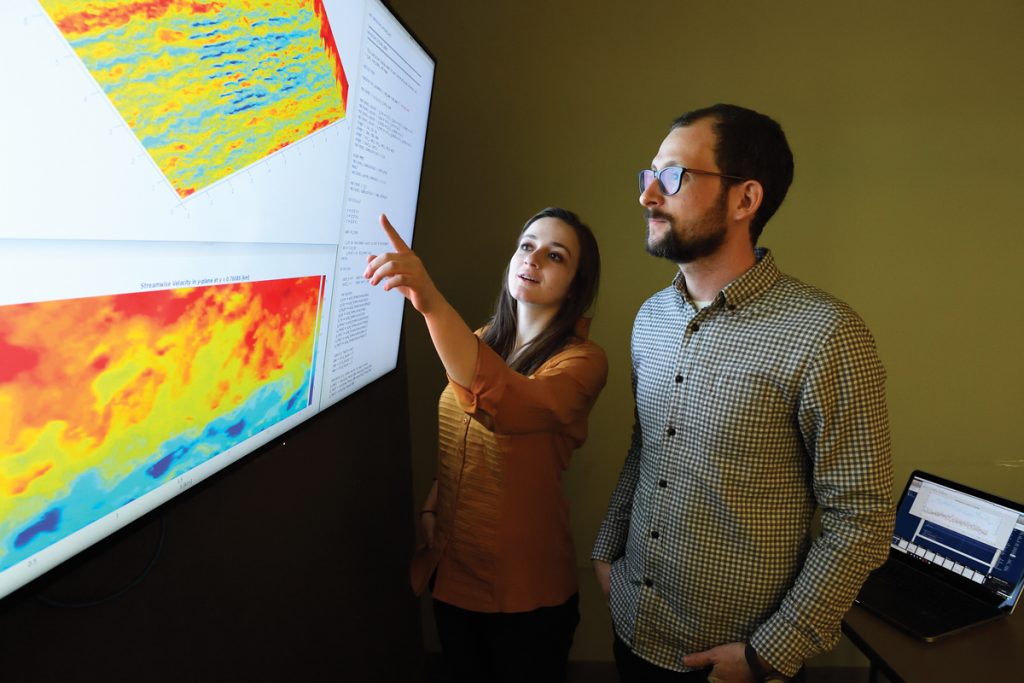
Wind power has become one of the cheapest sources of electricity in the United States. So as use of wind energy grows, it will be important to make sure the grid can handle fluctuations in electric power.
Fleets of small fossil-fuel power plants typically smooth those fluctuations. But could wind farms themselves provide that service? Carl Shapiro and Genevieve Starke, PhD candidates in the Department of Mechanical Engineering, are trying to figure out the answer with research funded by the National Science Foundation. The findings of the duo—who are being co-advised by professors Dennice Gayme and Charles Meneveau—could help put more clean, renewable energy on the grid.
For flawless grid operation, electric current must be sent at a constant frequency, voltage needs to be maintained, and power supply must match demand. Natural gas power plants provide bursts of power to the grid for that stability, and batteries are now being tested for that purpose.
“We’ve found a way to use a wind farm as a sort of battery,” Shapiro says. By controlling each turbine on a farm—changing how fast it spins, say, or which direction it faces—you can control the total power that the wind farm produces, he explains. The trick is to do it in an intelligent way in real time. Shapiro has designed smart controller software to do that.
The controller takes into account the interactions among turbines. “There’s a wake behind each turbine with lower wind speed, and we can try to direct those wakes away from downwind turbines by changing orientation,” he says.
Starke is devising more efficient ways to control wind farm output. Controlling the output of every one of the hundreds of turbines on a large wind farm is complex. She is trying to figure out whether that added complexity offers a performance advantage over a row-by-row controller that sums up power from each row.




